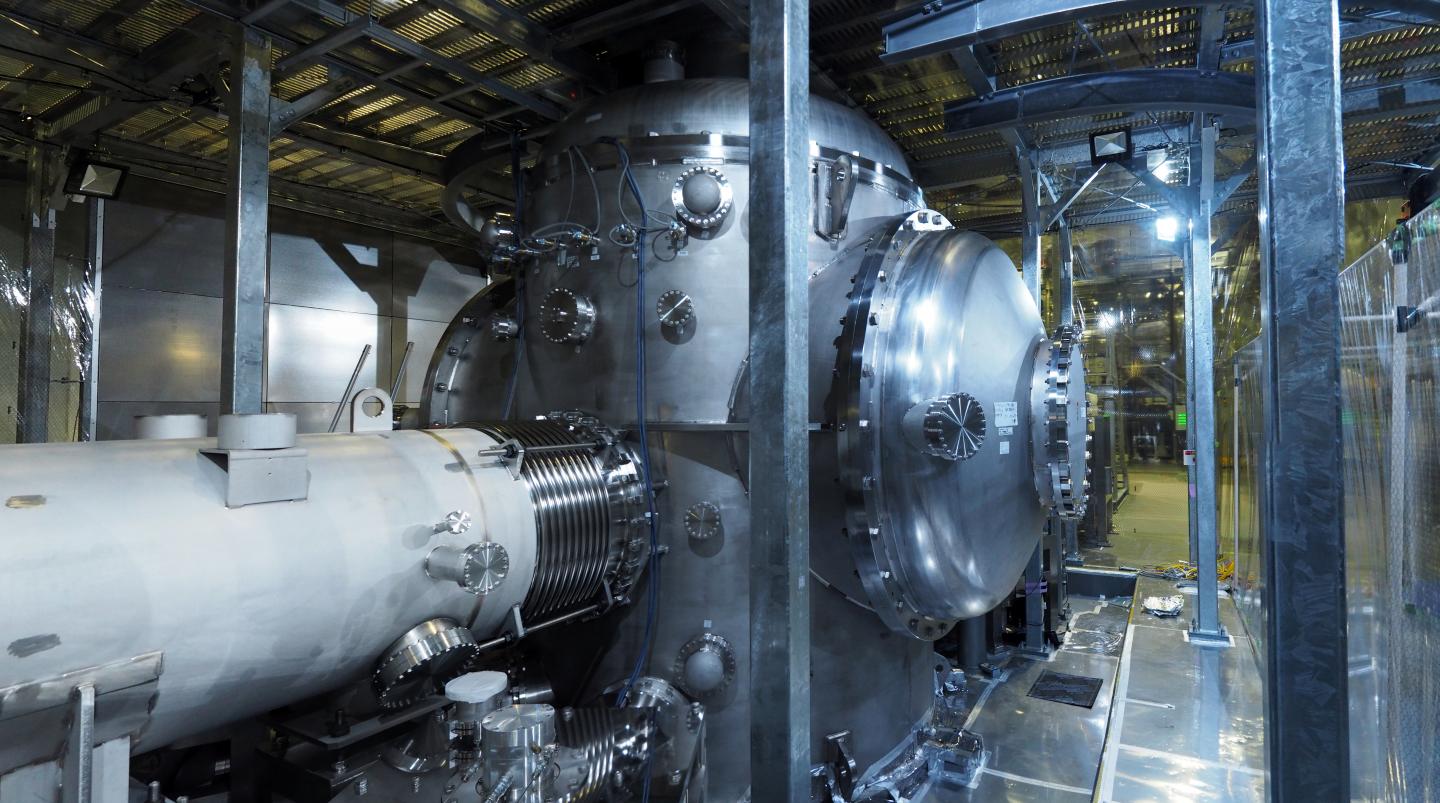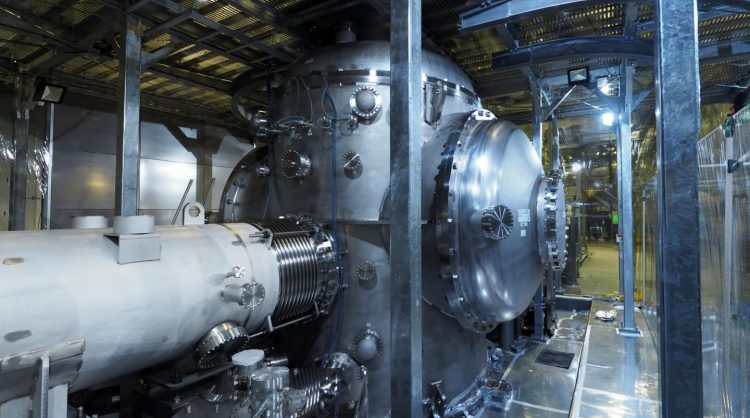Collaboration will enable pinpointing origin of gravitational-wave events

Credit: ICRR
The world’s three principal gravitational-wave detectors — LIGO in the U.S., Virgo in Italy, and now KAGRA in Japan — have signed a memorandum of agreement that covers scientific collaboration, including joint observation of gravitational waves and data sharing, for the coming years. This agreement also foresees expanding the collaboration to welcome new partners in the future.
Gravitational waves are ripples in space and time caused by cataclysmic events such as supernovas and the mergers of black holes. Predicted by Albert Einstein over a century ago, detection of the first gravitational waves was made by LIGO interferometers in 2015 and announced by the LIGO/Virgo collaboration in 2016. Gravitational-wave observation opens up a whole new window onto our universe.
KAGRA is a gravitational-wave observatory developed in Kamioka, Gifu Prefecture, Japan under the leadership of the University of Tokyo’s Institute for Cosmic Ray Research (ICRR) with contributions from the National Astronomical Observatory of Japan (NAOJ) and the High Energy Accelerator Research Organization (KEK). Construction started in 2010, and now the highly-sensitive instrument is nearing readiness to enter use. “We are very pleased to hold today’s ceremony to celebrate the completion of the construction of the large-scale, cryogenic, gravitational-wave detector, KAGRA,” said Takaaki Kajita, KAGRA’s principal investigator.”We hope to begin the observation by the end of the year, join the global network of gravitational-wave detectors and produce various important scientific results. On this occasion, we would like to thank the many people who helped this project in various ways.”
The Laser Interferometer Gravitational-Wave Observatory (LIGO) and the LIGO Scientific Collaboration (LSC) in the US are composed of more than 100 institutions worldwide. LIGO detected the first gravitational-wave in 2015. Having multiple detectors working together has several scientific benefits. “Having KAGRA join our network of gravitational-wave observatories will significantly enhance the science in the coming decade,” said David Reitze, LIGO executive director and principal investigator. “The KAGRA detector will enable us to more precisely locate gravitational-wave sources on the sky, a key goal of gravitational wave astronomy.”
Virgo (the Virgo Collaboration and the European Gravitational Observatory (EGO) Consortium) is composed of 96 institutions in the European Union (EU). As a multinational collaboration itself, Virgo already has experience of working with multiple partners. “With KAGRA joining, gravitational wave science will become a global collaborative effort. The Virgo Collaboration looks forward to learning from the new and innovative approach of using an underground and cryogenic interferometer,” said Jo van den Brand, Virgo Collaboration spokesperson.
KAGRA will now join the third observing run (O3), which started on April 1, 2019 and is planned to continue for one calendar year.
The memorandum of agreement (MoA) supersedes existing agreements between LIGO and Virgo. Once ratified by the governing bodies of each partner, the agreement will cover collaborative work initially until Sept. 30, 2023. After this date, the MOA may be extended on the agreement of all parties.
The MoA also includes the German/British Collaboration for the Detection of Gravitational Waves (GEO), which operates a 600-meter detector arm near Hannover in Germany and has made significant contributions to the U.S. LIGO detectors.
The MoA and related documents will be posted to the websites of the three organizations.
###
The KAGRA project is supported by Ministry of Education, Culture, Sports, Science, and Technology (MEXT) of Japan. KAGRA is hosted by the Institute for Cosmic Ray Research (ICRR), the University of Tokyo and co-hosted by the High Energy Accelerator Research Organization (KEK) and the National Astronomical Observatory of Japan (NAOJ). The University of Toyama also supports KAGRA. The KAGRA collaboration is composed of more than 360 individuals from more than 100 institutions in 15 countries and regions. A list of collaborators’ affiliations is available at http://gwwiki.
LIGO is funded by NSF and operated by Caltech and MIT, which conceived of LIGO and lead the Initial and Advanced LIGO projects. Financial support for the Advanced LIGO project was led by the NSF with Germany (Max Planck Society), the U.K. (Science and Technology Facilities Council) and Australia (Australian Research Council-OzGrav) making significant commitments and contributions to the project. Approximately 1,300 scientists from around the world participate in the effort through the LIGO Scientific Collaboration, which includes the GEO Collaboration. A list of additional partners is available at https:/
The Virgo Collaboration is currently composed of approximately 480 scientists, engineers, and technicians from 96 institutes from Belgium, France, Germany, Hungary, Italy, the Netherlands, Poland, and Spain. The European Gravitational Observatory (EGO) hosts the Virgo detector near Pisa in Italy, and is funded by Centre National de la Recherche Scientifique (CNRS) in France, the Istituto Nazionale di Fisica Nucleare (INFN) in Italy, and Nikhef in the Netherlands. A list of the Virgo Collaboration members can be found at http://public.
The University of Tokyo is Japan’s leading university and one of the world’s top research universities. The vast research output of some 6,000 researchers is published in the world’s top journals across the arts and sciences. Our vibrant student body of around 15,000 undergraduate and 15,000 graduate students includes over 4,000 international students. Find out more at http://www.
MEDIA CONTACTS
KAGRA
Yoshihisa Obayashi
[email protected]
+81 4 7136 5188
Virgo
Livia Conti
[email protected]
LIGO Laboratory
Whitney Clavin
[email protected]
Media Contact
Yoshihisa Obayashi
[email protected]





